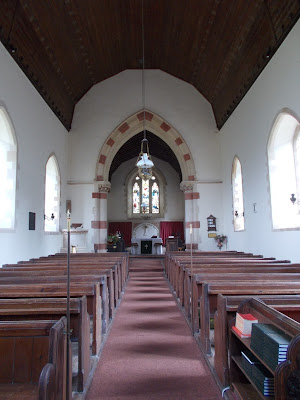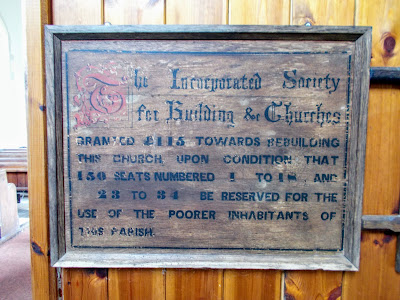Leighland Chapel was built in 1861-2 on the site of a medieval chapel. It was designed by C.E. Giles and is dedicated to St Giles. The medieval chapel was in existence by 1320 and in 1548 it was noted that there was a Lyland Chapel in the parish. The vicarage of Leighland Chapel was united with the rectory of Treborough in 1950 and the livings of Old Cleeve, Leighland Chapel and Treborough were merged in 1955. They are now in a benefice with St Luke's, Roadwater and St Mary's, Washford.
Leighland Chapel contains some interesting features, including a wooden bench end with a bird and acorns design carved into it, a lectern with a vine leaves and grapes carved on it and medieval tiles around the base of the font. The reredos, capitals and pulpit were decorated with passion flowers and foliage by Rachel Reckitt (1908-1995). Rachel was an artist and sculptor who lived at Golsoncott near Roadwater. She produced many works of art for several of the local churches, including Rodhuish, Old Cleeve, Carhampton and Withycombe.
There is a notice at the back of the church explaining Leighland Chapel's connection with Dom Philip Powel, who was one of the Tyburn Martyrs. He was born in Wales in 1594, became a monk at Douai in France but returned to England in 1622 after he was ordained. He lived with the Ponytz family at Leigh Barton for 20 years. Although he was a Roman Catholic, he preached at the old chapel in Leighland, as he was a friend of the priest-in-charge there. He tried to leave England during the English Civil War but was captured, tried, found guilty of "being a monk, and staying in the country contrary to the law. He was executed at Tyburn on 16th June 1646.














No comments:
Post a Comment